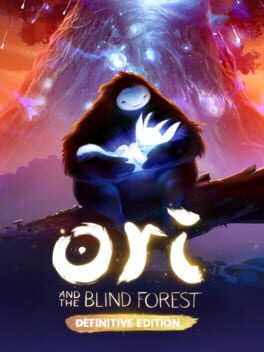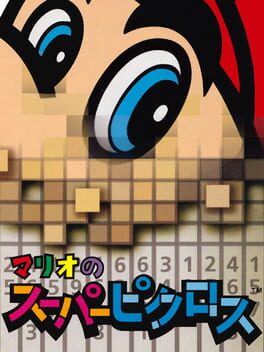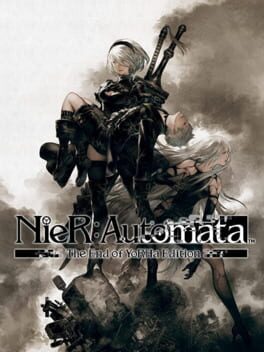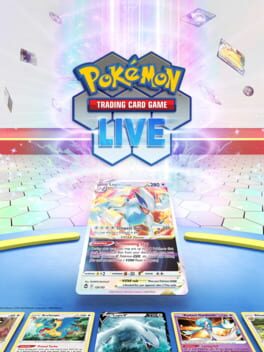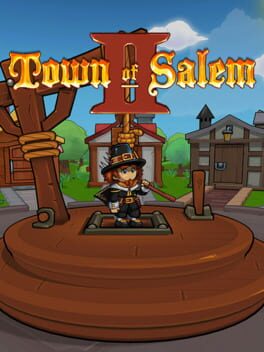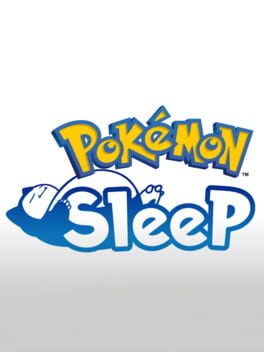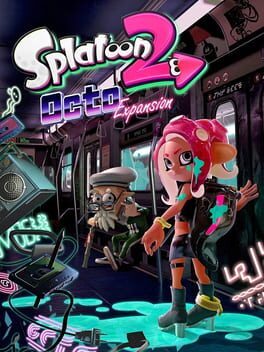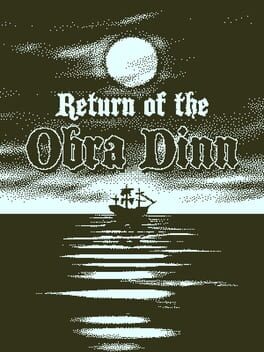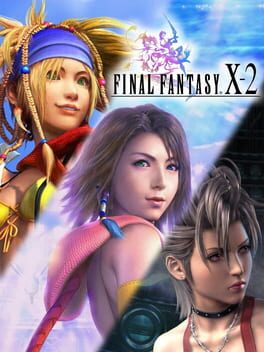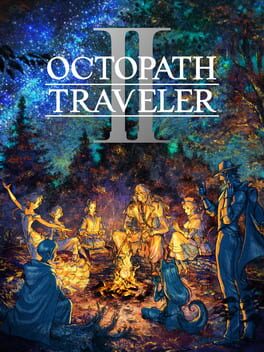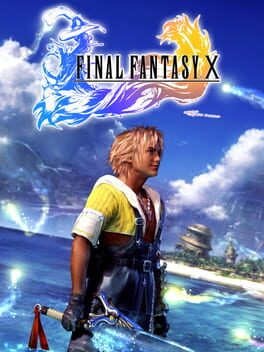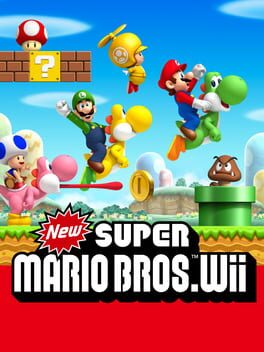waitttt this kinda ate.....bashing projectiles was a really satisfying form of aerial movement, being able to save anywhere let you tailor your own difficulty settings (respawning is instant which is great) and the art style was really pretty! Combat was the only thing that was kinda underwhelming, and there were some occasional level design annoyances but otherwise it was a really great metroidvania platformer! I got the collection for really cheap on black friday and I hear the sequel improves on every aspect of this game! very excited to play the next one!
this is worse than the gameboy mario's picross. visibility is so much worse (i am COLORBLIND and am squinting my eyes to see this on a TV SCREEN several feet away). adding wario puzzles, aka the definitive picross format, is nice but i still CANNOT SEE THE GAME. you will never live up to the catharsis of solving a game boy puzzle and seeing the words "back hoe" on my screen.
Yeah, this isn't for me.
I stopped after getting to the end of the first route. There's just a lot of stuff here that seems tailor-made to make me want to quit: multiple endings, requiring replaying large chunks, a map and UI that is borderline illegible to my colorblind and astigmatic eyes, and an action combat system that has me resorting to button mashing ZR and holding down R in an uncomfortable grip.
I read the major plot beats online and I actually like what I saw. At the very least, it seems like a less creatively bankrupt and depraved version of Xenoblade 3 (afaik this is also about unending war and the questions of existence) that doesn't take 80 hours to get to the point, and actually uses its medium as a video game as an asset to its storytelling. The entire aesthetic design of post-apocalypse earth and the bunker are additionally very beautiful. Even though I thought combat and traversal were cumbersome, I do still appreciate the overall visual design.
Unfortunately, I just found myself fatigued at every little sequence; being forced to replay essentially the same scenarios in order to hear retreaded philosophical arguments that were obvious the entire time isn't how I want to spend my winter break.
I appreciate what it's going for, but I'm out. At least I got a free t-shirt for preordering.
I stopped after getting to the end of the first route. There's just a lot of stuff here that seems tailor-made to make me want to quit: multiple endings, requiring replaying large chunks, a map and UI that is borderline illegible to my colorblind and astigmatic eyes, and an action combat system that has me resorting to button mashing ZR and holding down R in an uncomfortable grip.
I read the major plot beats online and I actually like what I saw. At the very least, it seems like a less creatively bankrupt and depraved version of Xenoblade 3 (afaik this is also about unending war and the questions of existence) that doesn't take 80 hours to get to the point, and actually uses its medium as a video game as an asset to its storytelling. The entire aesthetic design of post-apocalypse earth and the bunker are additionally very beautiful. Even though I thought combat and traversal were cumbersome, I do still appreciate the overall visual design.
Unfortunately, I just found myself fatigued at every little sequence; being forced to replay essentially the same scenarios in order to hear retreaded philosophical arguments that were obvious the entire time isn't how I want to spend my winter break.
I appreciate what it's going for, but I'm out. At least I got a free t-shirt for preordering.
2023
Overall a much more balanced version of ToS 1, easy access to information and lots of other quality of life improvements like tagging. Customization is cool but still feels a little plain, although I'm sure that will improve with time. It's sad that survivor and medium are gone but honestly in terms of balance and interactivity I guess it's for the best. Some of the new roles are insanely fun like the daytime killing roles (Deputy, Conjurer, Prosecutor) and improved investigative roles (Spy rework, Seer, Psychic). I never played the Coven expansion of ToS 1 so it all feels new to me - and the apocalypse roles are super cool too. Overall chat is a little less quirky and weird than the first game but I guess that's a symptom of the game being in early access and not having any free ways to play it. Overall still a riveting anthropological experience with some added polish and depth.
Those death games suck though LOL like I love the idea of having an extra fun activity after you die but why is one of the games just rolling dice???
Those death games suck though LOL like I love the idea of having an extra fun activity after you die but why is one of the games just rolling dice???
2023
Pikmin 4's first hour of gameplay is terrible. After not receiving a Pikmin game for a decade, the first hour of the experience is when all of the horrors of modern AAA game design settle in: grueling tutorials, a less-than-half-baked character creator, an incredibly boring supporting cast, and a sanitized UI that feels slow to navigate and lacks any of the charm previous installments contained.
That's the best word I can use to describe Pikmin 4's aesthetics: "sanitized". The cover art no longer looks like a clay model, fonts remove the series-unique bubbly typefaces from older games, similar to the minimalist aesthetics of the open world Zelda games that I've grown to hate, and the flavor text seldom contains the humorous charm akin to the spam mail, letters from Olimar's wife, or banter between captains. While the previous games took place on a ravaged Earth with relics resembling some human life, Pikmin 4 goes the much less creative route and opts to have the game set in a house and yard - as if it took place in the present day. It's another sanitized aspect of the design that prioritizes marketability over creative freedom, and the design of the different areas and dungeons blend together as a result. Oatchi's reveal as "the new dog character" feels like an additional thinly veiled marketing tactic - although he's actually cute unlike that crusty rat from the Puss in Boots sequel so I don't mind as much. The base area has the most annoying music ever to come out of the Pikmin franchise, and the growth of the area throughout the game is nothing short of disappointing. Story and characters are consistently disappointing if not downright contradictory. I don't heavily value story in a Pikmin game like I may in the Zelda series but there was a string of bad choices that led to me feeling this way.
I don't mind customizable silent protagonists when:
1: there are extensive customization options and
2: the supporting cast is able to fill the void of a silent protagonist
but neither of these things are true. Customization is pathetically simple and I tried to make myself look unique but I just ended up looking like Alph.
I'm not gonna fully get into the whole timeline/canon nonsense but just know that it's stupid and the game realistically had no reason to serve as a reboot. Instead of the Pikmin 3 cast returning, Pikmin 4 introduced weird lookalikes for no reason, and refuses to elaborate on Koppai's dwindling food supply. After the credits, Louie usurps the villain role yet it's never explained why he is turning people into leaflings, unlike when Olimar was the villain. There are simply too many issues like this to overlook.
Nintendo shit the bed with the multiplayer functionality in Pikmin 4. Which is weird, since this is a Miyamoto title. Co-op mode doesn't let the player take control of Oatchi/another captain, instead, they throw little pebbles. In general, Oatchi fails to be as versatile as a second captain, even in singleplayer - with charging pikmin being more difficult, the "go here" command being less intuitive, and other limitations. Bingo battles are gone completely, and there was a HUGE missed opportunity in not making the nighttime expeditions multiplayer.
As a whole, I found nighttime expeditions to be interesting, albeit severely underdeveloped. You simply collect crystals with glow pikmin, and use them to fight waves of enemies that walk towards your base. This is a good idea at its core, but I would have loved to see more tower defense and puzzle solving elements. Imagine if nighttime expeditions became an entire separate tower defense mode, with (online?) multiplayer, more puzzle solving and cooperation, etc? In its current state they are far too easy and shallow to enjoy.
Dandori battles are...fine, I guess? Aside from the lucky capsules that feel like they go against the entire point of dandori, they are pretty interesting ways to pit two players' efficiency skills against each other. My problem with it is that it cuts off half of your screen. Seriously, this sucks so bad. The limited visibility has me constantly feeling lost in what should be relatively small arenas. They also just feel like horrible pacebreakers when compared to the main game.
I found winged pikmin to be much more stupid than they were in Pikmin 3, and I never often found good uses for red or rock pikmin either.
Those are all my negative thoughts regarding Pikmin 4. Notice how I never brought up the main game?
That's because it's excellent. While the time limit is no longer here (unless you're talking about Olimar's side adventure which is also excellent and a completely unique set of puzzles!!), the challenge to optimize your strategy is still very much present in Pikmin 4. Each world is designed with multiple bases and dungeons with their own sets of puzzles and treasure. The overworld's clock runs faster than in the dungeon sections, so the speedier gameplay up above makes room for the gauntlet-like puzzle solving and compounding threats of the underground. While I said I didn't like dandori battles, I absolutely love dandori challenges. The bite-sized time trials in efficiency are super satisfying to crack. They're plentiful in number and you even get a 10-level gauntlet which is insanely difficult and addicting (except for level 7 which sucks because of the lock-on feature). The upgrade and item systems (aside from the things you unlock after finishing the entire game ughhh) are rewarding and I did legitimately feel like there were multiple strategies to each boss. The loop of 100%ing each dungeon, each area, is just so satisfying and fun that I'm able to overlook many but not all of the game's other shortcomings.
To be frank, Pikmin 4 felt like it was 🤏thiiis close to being a disaster. Everything about it aside from the core gameplay looked like it sucked - say if the core gameplay were to take some more pages out of Pikmin 2's book, I bet it absolutely would have sucked badly. Fortunately, that didn't happen. With a great game under its belt, it feels clear what steps the Pikmin series should take for the future.
- I don't mind if we get the dog again but multiple captains is a must-have in order to preserve the game's complexity. Oatchi was a diet captain at best.
- Expand heavily upon nighttime expeditions. Take notes from the tower defense genre and implement multiplayer.
- Bring back proper multiplayer as a whole. Bingo battles, main game...everything. It shouldn't have taken a hit in the first place.
- Cool it on the sanitized presentation. This one feels less likely to happen but visiting a normal human house can only get so interesting. Give us silly fonts, make the characters interesting again.
I'm excited to see how this series will grow in the future. Hopefully it won't take another ten years.
That's the best word I can use to describe Pikmin 4's aesthetics: "sanitized". The cover art no longer looks like a clay model, fonts remove the series-unique bubbly typefaces from older games, similar to the minimalist aesthetics of the open world Zelda games that I've grown to hate, and the flavor text seldom contains the humorous charm akin to the spam mail, letters from Olimar's wife, or banter between captains. While the previous games took place on a ravaged Earth with relics resembling some human life, Pikmin 4 goes the much less creative route and opts to have the game set in a house and yard - as if it took place in the present day. It's another sanitized aspect of the design that prioritizes marketability over creative freedom, and the design of the different areas and dungeons blend together as a result. Oatchi's reveal as "the new dog character" feels like an additional thinly veiled marketing tactic - although he's actually cute unlike that crusty rat from the Puss in Boots sequel so I don't mind as much. The base area has the most annoying music ever to come out of the Pikmin franchise, and the growth of the area throughout the game is nothing short of disappointing. Story and characters are consistently disappointing if not downright contradictory. I don't heavily value story in a Pikmin game like I may in the Zelda series but there was a string of bad choices that led to me feeling this way.
I don't mind customizable silent protagonists when:
1: there are extensive customization options and
2: the supporting cast is able to fill the void of a silent protagonist
but neither of these things are true. Customization is pathetically simple and I tried to make myself look unique but I just ended up looking like Alph.
I'm not gonna fully get into the whole timeline/canon nonsense but just know that it's stupid and the game realistically had no reason to serve as a reboot. Instead of the Pikmin 3 cast returning, Pikmin 4 introduced weird lookalikes for no reason, and refuses to elaborate on Koppai's dwindling food supply. After the credits, Louie usurps the villain role yet it's never explained why he is turning people into leaflings, unlike when Olimar was the villain. There are simply too many issues like this to overlook.
Nintendo shit the bed with the multiplayer functionality in Pikmin 4. Which is weird, since this is a Miyamoto title. Co-op mode doesn't let the player take control of Oatchi/another captain, instead, they throw little pebbles. In general, Oatchi fails to be as versatile as a second captain, even in singleplayer - with charging pikmin being more difficult, the "go here" command being less intuitive, and other limitations. Bingo battles are gone completely, and there was a HUGE missed opportunity in not making the nighttime expeditions multiplayer.
As a whole, I found nighttime expeditions to be interesting, albeit severely underdeveloped. You simply collect crystals with glow pikmin, and use them to fight waves of enemies that walk towards your base. This is a good idea at its core, but I would have loved to see more tower defense and puzzle solving elements. Imagine if nighttime expeditions became an entire separate tower defense mode, with (online?) multiplayer, more puzzle solving and cooperation, etc? In its current state they are far too easy and shallow to enjoy.
Dandori battles are...fine, I guess? Aside from the lucky capsules that feel like they go against the entire point of dandori, they are pretty interesting ways to pit two players' efficiency skills against each other. My problem with it is that it cuts off half of your screen. Seriously, this sucks so bad. The limited visibility has me constantly feeling lost in what should be relatively small arenas. They also just feel like horrible pacebreakers when compared to the main game.
I found winged pikmin to be much more stupid than they were in Pikmin 3, and I never often found good uses for red or rock pikmin either.
Those are all my negative thoughts regarding Pikmin 4. Notice how I never brought up the main game?
That's because it's excellent. While the time limit is no longer here (unless you're talking about Olimar's side adventure which is also excellent and a completely unique set of puzzles!!), the challenge to optimize your strategy is still very much present in Pikmin 4. Each world is designed with multiple bases and dungeons with their own sets of puzzles and treasure. The overworld's clock runs faster than in the dungeon sections, so the speedier gameplay up above makes room for the gauntlet-like puzzle solving and compounding threats of the underground. While I said I didn't like dandori battles, I absolutely love dandori challenges. The bite-sized time trials in efficiency are super satisfying to crack. They're plentiful in number and you even get a 10-level gauntlet which is insanely difficult and addicting (except for level 7 which sucks because of the lock-on feature). The upgrade and item systems (aside from the things you unlock after finishing the entire game ughhh) are rewarding and I did legitimately feel like there were multiple strategies to each boss. The loop of 100%ing each dungeon, each area, is just so satisfying and fun that I'm able to overlook many but not all of the game's other shortcomings.
To be frank, Pikmin 4 felt like it was 🤏thiiis close to being a disaster. Everything about it aside from the core gameplay looked like it sucked - say if the core gameplay were to take some more pages out of Pikmin 2's book, I bet it absolutely would have sucked badly. Fortunately, that didn't happen. With a great game under its belt, it feels clear what steps the Pikmin series should take for the future.
- I don't mind if we get the dog again but multiple captains is a must-have in order to preserve the game's complexity. Oatchi was a diet captain at best.
- Expand heavily upon nighttime expeditions. Take notes from the tower defense genre and implement multiplayer.
- Bring back proper multiplayer as a whole. Bingo battles, main game...everything. It shouldn't have taken a hit in the first place.
- Cool it on the sanitized presentation. This one feels less likely to happen but visiting a normal human house can only get so interesting. Give us silly fonts, make the characters interesting again.
I'm excited to see how this series will grow in the future. Hopefully it won't take another ten years.
2023
For an app that promotes and prioritizes getting as much sleep as possible, there sure is an awful lot of text, tutorials, unskippable animations, and manual item collection to do. You can't change your set bedtime unless you don't mind having your weekly streak reset (???), there's convoluted skills and happiness meters for each pokemon, and the app has the gall to implement a BATTLE PASS. Having the app open while the phone is charging on your bed next to you is already pushing it, I'm truly only hanging onto this app by a thread.
The only intuitive feature keeping me from deleting the app completely is the smart alarm which is able to wake me up during lighter sleep periods - a feature that already exists basically everywhere except on Apple's shitty default clock app. That, and I just want to see my little Cubone evolve. The animations are nice I guess, but it seems like Pokemon Sleep has no idea what actually compels people to get adequate rest.
The only intuitive feature keeping me from deleting the app completely is the smart alarm which is able to wake me up during lighter sleep periods - a feature that already exists basically everywhere except on Apple's shitty default clock app. That, and I just want to see my little Cubone evolve. The animations are nice I guess, but it seems like Pokemon Sleep has no idea what actually compels people to get adequate rest.
2019
2003
I want to make it known that I think FFX-2 is mid in spite of the gaudy pop music and lighthearted tone. I'm not one of those joyless misogynistic freaks who hates the tone change of the sequel. I actually like it a lot and I think it fits well in a world rediscovering its identity post-theocratic fiasco.
FFX-2's biggest flaws are in its nonlinearity and heavy padding with shitty minigames and side objectives. I desperately wanted to like this game more than I did; diving into Yuna's character growth transforming a selfless martyr into someone who's finally trying to live for herself (and notably stumbling along the way, as anyone would) is FFX-2's greatest strength. Solving her identity crisis is baked into the game's systems - with dresspheres, the greater political conflict between New Yevon and the Youth League, and party members Rikku and Paine.
I unfortunately could not tolerate sitting through the awful open-ended chapter structure (as opposed to FFX's hallway storytelling which I much prefer) and poor side objectives. Rikku and Paine also don't get nearly as much character spotlight as they deserve - with Rikku basically unchanged since FFX and Paine being no deeper than her relevance to the much less interesting larger plot. I think the dressphere system in battle is nice but not nice enough to make me jump through hoops in order to get all of the cool hidden classes. Even with its much shorter runtime than FFX, X-2 finds ways to pad itself drastically.
The soundtrack is also way worse.
Maybe I'll come back someday, but I think I'm better off just watching the important cutscenes on YouTube.
FFX-2's biggest flaws are in its nonlinearity and heavy padding with shitty minigames and side objectives. I desperately wanted to like this game more than I did; diving into Yuna's character growth transforming a selfless martyr into someone who's finally trying to live for herself (and notably stumbling along the way, as anyone would) is FFX-2's greatest strength. Solving her identity crisis is baked into the game's systems - with dresspheres, the greater political conflict between New Yevon and the Youth League, and party members Rikku and Paine.
I unfortunately could not tolerate sitting through the awful open-ended chapter structure (as opposed to FFX's hallway storytelling which I much prefer) and poor side objectives. Rikku and Paine also don't get nearly as much character spotlight as they deserve - with Rikku basically unchanged since FFX and Paine being no deeper than her relevance to the much less interesting larger plot. I think the dressphere system in battle is nice but not nice enough to make me jump through hoops in order to get all of the cool hidden classes. Even with its much shorter runtime than FFX, X-2 finds ways to pad itself drastically.
The soundtrack is also way worse.
Maybe I'll come back someday, but I think I'm better off just watching the important cutscenes on YouTube.
2023
When the first Octopath game came out in 2018, it rocked my world. Even when the reception of the game online seemed very mixed, I couldn't help falling in love with the stellar orchestrated soundtrack composed by Yasunori Nishiki and the refined job and battle system that seemed to blow classic JRPG battle mechanics out of the water. The soundtrack in particular was a formative set of compositions that I showed to all of my friends, and to this day we perform arrangements of the pieces in our string ensembles. Even back then I acknowledged the game's narrative shortcomings, but I craved the game's lore and worldbuilding nonetheless. The endgame, while poorly explained and hidden behind minor sidequests, provided infodumps that captivated me. I itched to learn more about Orsterra's gods and minor bosses, optimized battle equipment sets and secondary classes, and the OST, including the wonderful Break and Boost Arrangements, was on repeat in my Spotify playlists. My love for this game is linked to my identity as a musician, and I can tell there's love and passion oozing out of every bit of this game's dynamic musical design. As I'm typing this, I'm sitting across from my shelf of vinyl records containing the Octopath Traveler Recorded Journey record alongside my various pop and rock records. Honestly, even if every other part of the octopath games were shit, I would still eat them up if they have soundtracks this good.
I'm thrilled to see the internet treat Octopath 2 more kindly than its predecessor, even if it makes me scratch my head a little. In my opinion, Octopath 2 is a marginal improvement on nearly every mechanic introduced in the original. Key word: marginal. Because I loved nearly every bit of the first game, I happened to love the second game a little more in every way. But it confuses me nonetheless when I see countless posts talking about how this game was such a big step up from the first.
Combat mechanics of the break and boost system are the same at their core - there are no new weapons or elements. OT2 added latent powers, overhauled concoct and beast lore, added use cases for summoned NPCs, added EX skills, added warrior skills, and did some overall balancing with the moveset of pre-existing jobs. We got just as many hidden jobs as before, but all of them feel like nerfed versions of the hidden jobs in OT1 except for inventor. This sounds like a lot, and all of these changes (except for removing warmaster smh) do improve combat. But not by much. The bread-and-butter setups are still there, you just need to tinker your level of micromanagement.
Individual characters' stories were always hit or miss, and that hasn't changed here. Hikari is just as much of a piece of cardboard as Olberic was, and Agnea's connection to the main story is just as irrelevant as Tressa's. Osvald's story starts strong but fizzles out with a laughably cliché villain, Castti's amnesia trope is also painfully cliché, and Ochette's story is bogged down by her one-note writing. I think the real standout story for me in OT2 is Throné's. It starts out as a combination of Primrose and Therion's stories from OT1 (they were my favorites from the first game) but unlike other stories in the series, after the predictable villain is defeated, the plot takes a huge left turn into unforeseen territory. The themes her story set up led perfectly into the dark twist, and I always love seeing this kind of stuff in JRPGs. Character dialogue and writing suffers just as much as it did in OT1, with the added benefit of not having to listen to H'aanit's fake old english accent. Each line of dialogue sounds like it was recorded on a separate studio day, and the writing of the dialogue is way too formal. These cracks show even more in OT2 given its more modern post-industrial setting. I have a feeling a big reason why the dialogue feels so unnatural is because each line is a separate recording in a separate speech bubble, which is required so the player can press the A button to advance dialogue at their will. It's customary of classic SNES-era JRPGs, but those games didn't have voice acting, so it wasn't a problem.
Crossed Path stories were an attempt to fix the most common point of criticism, which was that characters didn't interact outside of flavor text, but these chapters have very little substance or meaning until the buildup to the final boss. Temenos and Throné did feel like an awesome dynamic duo, though, so it was still fun to see their expanded banter. They're a welcome addition but I won't pretend like they fixed the problem.
While the Octopath games clearly draw heavy inspiration from 16-bit classic JRPGs, my wish is for the series to let go of a lot of those standards in order to grow. I want more seamless dialogue and deeper character writing, full uninterrupted cutscenes, more pretty camera angles (I still like the HD-2D visual style though), more jobs a la Bravely Default, less predictable story chapters, more party interactions...just more everything!
Complaints aside, the fact that OT1 even got a sequel is thrilling. While I don't think OT2's improvements are nearly as significant other people say, it won't stop me from coming back to New Delsta to hear that sweet marimba melody.
pleasedroptheOSTonspotifypleasemakeanewbreak&boostarrangementsalbumpleeeeeaaaaaseeeee
I'm thrilled to see the internet treat Octopath 2 more kindly than its predecessor, even if it makes me scratch my head a little. In my opinion, Octopath 2 is a marginal improvement on nearly every mechanic introduced in the original. Key word: marginal. Because I loved nearly every bit of the first game, I happened to love the second game a little more in every way. But it confuses me nonetheless when I see countless posts talking about how this game was such a big step up from the first.
Combat mechanics of the break and boost system are the same at their core - there are no new weapons or elements. OT2 added latent powers, overhauled concoct and beast lore, added use cases for summoned NPCs, added EX skills, added warrior skills, and did some overall balancing with the moveset of pre-existing jobs. We got just as many hidden jobs as before, but all of them feel like nerfed versions of the hidden jobs in OT1 except for inventor. This sounds like a lot, and all of these changes (except for removing warmaster smh) do improve combat. But not by much. The bread-and-butter setups are still there, you just need to tinker your level of micromanagement.
Individual characters' stories were always hit or miss, and that hasn't changed here. Hikari is just as much of a piece of cardboard as Olberic was, and Agnea's connection to the main story is just as irrelevant as Tressa's. Osvald's story starts strong but fizzles out with a laughably cliché villain, Castti's amnesia trope is also painfully cliché, and Ochette's story is bogged down by her one-note writing. I think the real standout story for me in OT2 is Throné's. It starts out as a combination of Primrose and Therion's stories from OT1 (they were my favorites from the first game) but unlike other stories in the series, after the predictable villain is defeated, the plot takes a huge left turn into unforeseen territory. The themes her story set up led perfectly into the dark twist, and I always love seeing this kind of stuff in JRPGs. Character dialogue and writing suffers just as much as it did in OT1, with the added benefit of not having to listen to H'aanit's fake old english accent. Each line of dialogue sounds like it was recorded on a separate studio day, and the writing of the dialogue is way too formal. These cracks show even more in OT2 given its more modern post-industrial setting. I have a feeling a big reason why the dialogue feels so unnatural is because each line is a separate recording in a separate speech bubble, which is required so the player can press the A button to advance dialogue at their will. It's customary of classic SNES-era JRPGs, but those games didn't have voice acting, so it wasn't a problem.
Crossed Path stories were an attempt to fix the most common point of criticism, which was that characters didn't interact outside of flavor text, but these chapters have very little substance or meaning until the buildup to the final boss. Temenos and Throné did feel like an awesome dynamic duo, though, so it was still fun to see their expanded banter. They're a welcome addition but I won't pretend like they fixed the problem.
While the Octopath games clearly draw heavy inspiration from 16-bit classic JRPGs, my wish is for the series to let go of a lot of those standards in order to grow. I want more seamless dialogue and deeper character writing, full uninterrupted cutscenes, more pretty camera angles (I still like the HD-2D visual style though), more jobs a la Bravely Default, less predictable story chapters, more party interactions...just more everything!
Complaints aside, the fact that OT1 even got a sequel is thrilling. While I don't think OT2's improvements are nearly as significant other people say, it won't stop me from coming back to New Delsta to hear that sweet marimba melody.
pleasedroptheOSTonspotifypleasemakeanewbreak&boostarrangementsalbumpleeeeeaaaaaseeeee
Tears of the Kingdom improved on nearly all of Breath of the Wild's positive qualities, but completely failed to address its negative qualities - in some ways regressing in certain aspects.
The strongest conflict the player is faced with regarding this game's design is the contradiction between nonlinearity and structured progression. This affects the gameplay but also tends to bleed into the mishandling of the story and the design of the world itself.
Link's abilities and the world design have so many mechanical improvements to the point where TOTK actually feels sort of like the sandbox BOTW tried to be. Ultrahand is the star of the show, with recall and ascend being additional conveniences. Fuse is a gimmick that ultimately adds needless micromanagement in my opinion. Nintendo, amidst the criticisms of poor weapon durability, instead decided to double down on their decision and make material fusion a core mechanic. It was marketed in a way where you're like "wow, look at all of these possibilities!" but I found myself just fusing my highest damage materials to my weapons every time. The lack of accessibility and convenience built into the UI really makes experimentation feel like a chore. Particle effects in many places (the worst example being in fiery areas of the depths) were so overwhelming and they literally blinded you. Camera speed when using ultrahand grinds to a halt. Fusing items to weapons and shields requires the player to scavenge their inventory, drop the items on the ground, equip the items you want to be fused, and only then can you fuse them. There is no option to do this in menus. Fusing items to arrows is a one-time instance - you can't toggle items on or off. If you want to use (or throw) bomb flowers, get ready to use the scroll menu for every single shot. Autobuild charged the player zoanite to build things, and never asks the player if they can use zonai item capsules instead, forcing the player to once again go into the menu and place each part on the ground if they want to use them. The other huge fumble was the implementation of sage powers. They feel downright awful to use, requiring the player to run and talk with them to activate the power. I have no idea why Riju's power couldn't display a button prompt when the player draws their bow nor do I know why they decided to make her effective radius a tiny circle that expands so slowly. Sidon's power should have been able to be activated when the user has their shield up. Again, Nintendo refuses to improve accessibility or convenience - a problem also present in games like Animal Crossing (remember when players begged for years for bulk crafting and more durable tools?) and Splatoon (inadequate colorblind support, lack of/inaccurate reticles, etc) with no solutions in sight.
Combat is the sore thumb that the community hasn't shied away from pointing out. Not only are there less swordplay options compared to Twilight Princess and Skyward Sword, but the optimal strategy of flurry rushing and headshotting gets incredibly monotonous quickly, and isn't helped by the still-poor enemy variety (another complaint Nintendo doubled down on). Weird strategies of using complicated zonai devices can be funny in short clips on YouTube, but are way less convenient or sustainable than simply swinging a high-powered weapon over and over. I hate how your weapon combo knocks over bokoblins/lizalfos/horriblins and they just go flying back, so you have to run towards where they flung, and do the same thing while their incredibly bloated HP bars dwindle down. Bosses can sometimes be interesting, but other times stink. Frox are okay, but get old quick because they're the only unique boss in the depths. Colgera was literally just target practice, Queen Gibdo was cool but unfortunately made worse by the poor implementation of Riju's power and fuse, Mucktorok was so easy but it had so much HP and kept running away, and Marbled Gohma was good except for the fact that Yunobo is annoying to access and takes a while to recharge (and he's annoying as fuck). Flux constructs are cool for the first few fights but then you have to fight them 100 more times. Gleeoks are actually really fun, and I enjoy their multiple phases and elements. At this point, combat is the first thing that needs a direct overhaul in the next Zelda game.
I was pretty harsh on BOTW's minimalist style soundtrack, as it felt like a step down considering the series' deep history with music. I think TOTK's soundtrack is fuller in some areas, but I do actually miss other musical aspects of BOTW. The shrine theme from BOTW was beautiful and iconic with its bagpipes, strings, and synths, and I find it much superior to the current shrine theme, which I can barely even hear. I also think the lack of any Kass equivalent is a big blow to the game's musical identity. Otherwise, TOTK's soundtrack was very nice. The dungeon and boss themes were pretty, and I absolutely adore the music on the sky islands and especially the Thunderhead islands. I will say, however, that I audibly groaned when I got to the cold area of the great sky island and heard those same stupid ambient cold sound effects. I still think it wouldn't hurt to give each province their own subtle musical motif - it would add a lot to the exploration and regional identity of the world.
World design was a net upgrade over BOTW, as the caves, chasms, pirate ships, and expanded towns all contribute to the world's fullness. It's less of a quiet game, and you can argue it doesn't hold a candle to BOTW's atmosphere, but I think it works well enough as a sandbox. I do think TOTK's overworld does a good job at addressing the complaints of a barren overworld in BOTW. Unfortunately, those complaints are just as valid when looking at the depths. There's a complete lack of diversity in biomes, all enemies are recycled except for Frox, and the scarce points of interest like the mines and coliseums are reminiscent of Wind Waker's eye reefs - incredibly repetitive. The depths were a slog and I only felt compelled to activate all the lightroots for imaginary completionist peace of mind. Sky islands were pretty underwhelming, all things considered. I enjoyed the occasional individual zonai mechanical puzzle, but other islands copy pasted the same launch platforms, spinny islands, crystal puzzles, and boss islands. Again, my only desire to visit them was not out of curiosity but out of completionist's desire.
This is minor, but I vastly prefer the visual aesthetics of the sheikah over the zonai. Shrine music, coloration, and enemy design all felt more thoughtful. Guardians were scary but pretty, and their presence was a neat way to direct players in certain path choices.
Zelda stories save certain parts of Wind Waker, Skyward Sword and Majora's Mask have never impressed me. There's only so much you can do with a continuous prophecy of good and evil and a silent protagonist. Breath of the Wild's main narrative conflict, the "Calamity", was a bore. What was interesting was how the various missteps of the kingdom 100 years prior shaped the development of the tragedy. Center to this story was the growth of Zelda's character displayed through assorted memories scattered across Hyrule. This system was terrible for multiple reasons, the most egregious being the ability for the player to view them out of order, making the events appear as character regression. The most optimal way to view these cutscenes are through a YouTube compilation, and that's pretty shameful. TOTK's only improvement to this system is the geoglyphs, giving the player a much easier opportunity to access the memories. Other than that, they're worse. A temple does give you the order in which to find the memories but that design is so counterintuitive to the "go anywhere, do anything" world the devs have created. If I see a point of interest, I'm going to go there. Who in their right mind would zigzag all across the map just to watch the memories in order? The memories themselves displayed less characterization and more info dumping the random lore. I find a lot of the dialogue and story content to be incredibly corny, "secret stones", ganondorf's cliche ass monologue and all. The twist with the light dragon was kinda cool but I still prefer learning about Zelda's actual character development, and of course I would prefer an actual linear story over either option.
Dungeons were just as bad as BOTW, with some minor mixups and extra visual flair. The terminal-based systems were lazy enough in BOTW but the linearity of the dungeon design in TOTK is somehow even more egregious. The water temple was jaw-droppingly pathetic, with a gimmicky water bubble mechanic only present here, and four individual paths to each terminal with no semblance of nonlinearity or environmental puzzles. The wind temple was nearly just as bad, having a fleeting sky boat mechanic and a similarly simple design. I sorta saw the vision with the fire temple but the minecarts could be avoided for more easy and convenient (but also more boring) cheesy solutions. Also, building a super long platform to ring the gong with no floor was a horrible experience and it felt so terrible to know the solution the whole time but be let down by finicky mechanics. The lightning temple by far showed the most promise. The starting section was generally linear but had some branching options and encouraged exploration. Once you got to the main room, there was immense verticality, adding complexity. Previously, I was never a fan of verticality in Zelda dungeons. Namely, the Snowhead Temple in Majora's Mask felt bogged down by the unintuitive map and it was overall annoying if you accidentally fell down a floor. Here, it's much more manageble and one of the few times I enjoyed having waypoints in dungeons. The lightning temple actually makes use of ascend in clever ways, and the light puzzles do get progressively harder. I still don't think it's nearly on the same level as most traditional dungeons but it has some good qualities that I won't overlook. The fact that there were yet again only four dungeons was an immense disappointment, and it's even more disappointing because I found the spirit temple early on and didn't know it was a pseudo-dungeon until much later. I was so pumped when I stumbled upon it for the first time but my hopes were crushed lmao.
The push and pull of nonlinear solution finding and structured progression is at its worst when it comes to puzzles and shrines. TOTK has more shrines than BOTW, but the higher quantity is not put to good use. There are WAY too many crystal shrine quests, and overall the quality of overworld shrine quests absolutely plummeted. Without Kass, the amount of environmental puzzle solving is highly decreased, and many out-of-the-way shrines simply hide in caves with hard to spot entrances. It felt as though a majority of shrines were just Rauru's Blessing. So many of the shrines that do have puzzles are entirely too short, introducing one cool idea but never expanding on it for more complex puzzles. For example, the shrine "Alignment" has the player using recall to align three spinning pillars in order to ascend through all three of them. When you get to the top, it's just over. No expansion on those ideas, no added complexity, and most importantly, no application of this puzzle exists anywhere else in the game. There are so many other shrines that are just as brief and unapplicable to the overworld as this one, to the point where it would be futile to name them all. I've already seen complaints from others about that one shrine that requires the player to get caught in a laser trap when the rest of the entire game incentivizes you to avoid lasers. I won't say all shrines are bad. The Proving Grounds are reminiscent of the Eventide Island challenge of BOTW and are a much more diverse and engaging set of combat challenges than the tests of strength. There are also some shrines that act as a single puzzle but their scope justifies that. One shrine in particular that I loved, "A Prone Pathway", requires the player to navigate a spinning cage, making use of height differences in platforms and ascension to make their way to the top. It's a simple assessment of the environment that isn't dependent on linear mastery of learned mechanics, nor is it so fucking braindead that you can just cheese it with a zonai device or fused item. Which brings me to another point: the application of ultrahand and zonai devices on puzzle solving. I've heard so much praise on TOTK's open ended puzzle solving mechanics but it can't be understated how much this dumbs down level of puzzles available ingame. It's hard to reconcile these elements of progression and creativity, because everybody wants something different. It doesn't help that veterans of Breath of the Wild had no issue with certain basic environmental puzzles. Remember the BOTW shrine surrounded by thorns? Accessing it was part of the challenge, and while simple, it had a single clear solution: gliding from a higher distance. Not only do veterans not get to experience that "aha" because it's just second nature, but zonai devices trivialize any puzzles based on vertical or horizontal world exploration. The paraglider could have been used as a unique progression tool, as it changes the way you can interact with the world after obtaining it (deku leaf in WW had a couple puzzles that made great use of this). In a baffling decision, you're actually able to miss out on the paraglider by exploring other places before going to lookout landing. At first, when I dropped from the sky without a glider, I was excited that the glider was going to be used as a progression tool like that. But no, it's just able to be missed out on to absolute disadvantage of the player.
Just like BOTW, the genius design of the starting area does not properly translate to the scope of the entire world. Right off the bat, the great sky island shows you a korok that needs to reach his friend; there's a metal pipe that reaches from your island to the other korok's island. In this situation, you're able to:
- build a lift using the conveniently placed hook and platform that can carry both you and the korok
- ignore the korok and discover the application of shield surfing, transporting you across faster than any other mode of transportation thus far in the game
- spend an hour making a really long bridge or rigging some stupid intricate zonai device that is technically "creative" but is inefficient, unsustainable, and obviously not ideal
upon reaching this island, there are more activities for you to do in the immediate vicinity.
^This type of problem solving is straight up absent from most of the actual overworld and all of the depths. The third option is always available as a crutch and ends up souring the puzzle solving experience. Zonai devices quickly trivialize the speed and quality of navigation, and there is usually never more than one objective nearby at a time. It's why the Great Plateau and Great Sky Island are just so much more engaging than the rest of the game. Fun fact, I actually accidentally skipped through the entire thunderhead isles using the hover bike. I didn't know it was a linear set of puzzle islands, and I just obliviously made my way to the top without knowing what was below.
I know I talked a lot of shit, but I'm actually mostly happy with TOTK's open overworld and sandbox mechanics. The physics engine is so promising and provided a excellent 40 hours full of childlike wonder, discovery, and exploration. But the following 80 hours were pure monotony. I'm so sick of the open world wave dominating gaming right now. If you had to make me choose between being able to waste an hour and a ton of resources building a stupid custom tank, or playing through a fully linear game with dungeons like the Sandship, I'm taking the fucking Sandship. To hell with "make your own solution", I want to solve real puzzles.
The strongest conflict the player is faced with regarding this game's design is the contradiction between nonlinearity and structured progression. This affects the gameplay but also tends to bleed into the mishandling of the story and the design of the world itself.
Link's abilities and the world design have so many mechanical improvements to the point where TOTK actually feels sort of like the sandbox BOTW tried to be. Ultrahand is the star of the show, with recall and ascend being additional conveniences. Fuse is a gimmick that ultimately adds needless micromanagement in my opinion. Nintendo, amidst the criticisms of poor weapon durability, instead decided to double down on their decision and make material fusion a core mechanic. It was marketed in a way where you're like "wow, look at all of these possibilities!" but I found myself just fusing my highest damage materials to my weapons every time. The lack of accessibility and convenience built into the UI really makes experimentation feel like a chore. Particle effects in many places (the worst example being in fiery areas of the depths) were so overwhelming and they literally blinded you. Camera speed when using ultrahand grinds to a halt. Fusing items to weapons and shields requires the player to scavenge their inventory, drop the items on the ground, equip the items you want to be fused, and only then can you fuse them. There is no option to do this in menus. Fusing items to arrows is a one-time instance - you can't toggle items on or off. If you want to use (or throw) bomb flowers, get ready to use the scroll menu for every single shot. Autobuild charged the player zoanite to build things, and never asks the player if they can use zonai item capsules instead, forcing the player to once again go into the menu and place each part on the ground if they want to use them. The other huge fumble was the implementation of sage powers. They feel downright awful to use, requiring the player to run and talk with them to activate the power. I have no idea why Riju's power couldn't display a button prompt when the player draws their bow nor do I know why they decided to make her effective radius a tiny circle that expands so slowly. Sidon's power should have been able to be activated when the user has their shield up. Again, Nintendo refuses to improve accessibility or convenience - a problem also present in games like Animal Crossing (remember when players begged for years for bulk crafting and more durable tools?) and Splatoon (inadequate colorblind support, lack of/inaccurate reticles, etc) with no solutions in sight.
Combat is the sore thumb that the community hasn't shied away from pointing out. Not only are there less swordplay options compared to Twilight Princess and Skyward Sword, but the optimal strategy of flurry rushing and headshotting gets incredibly monotonous quickly, and isn't helped by the still-poor enemy variety (another complaint Nintendo doubled down on). Weird strategies of using complicated zonai devices can be funny in short clips on YouTube, but are way less convenient or sustainable than simply swinging a high-powered weapon over and over. I hate how your weapon combo knocks over bokoblins/lizalfos/horriblins and they just go flying back, so you have to run towards where they flung, and do the same thing while their incredibly bloated HP bars dwindle down. Bosses can sometimes be interesting, but other times stink. Frox are okay, but get old quick because they're the only unique boss in the depths. Colgera was literally just target practice, Queen Gibdo was cool but unfortunately made worse by the poor implementation of Riju's power and fuse, Mucktorok was so easy but it had so much HP and kept running away, and Marbled Gohma was good except for the fact that Yunobo is annoying to access and takes a while to recharge (and he's annoying as fuck). Flux constructs are cool for the first few fights but then you have to fight them 100 more times. Gleeoks are actually really fun, and I enjoy their multiple phases and elements. At this point, combat is the first thing that needs a direct overhaul in the next Zelda game.
I was pretty harsh on BOTW's minimalist style soundtrack, as it felt like a step down considering the series' deep history with music. I think TOTK's soundtrack is fuller in some areas, but I do actually miss other musical aspects of BOTW. The shrine theme from BOTW was beautiful and iconic with its bagpipes, strings, and synths, and I find it much superior to the current shrine theme, which I can barely even hear. I also think the lack of any Kass equivalent is a big blow to the game's musical identity. Otherwise, TOTK's soundtrack was very nice. The dungeon and boss themes were pretty, and I absolutely adore the music on the sky islands and especially the Thunderhead islands. I will say, however, that I audibly groaned when I got to the cold area of the great sky island and heard those same stupid ambient cold sound effects. I still think it wouldn't hurt to give each province their own subtle musical motif - it would add a lot to the exploration and regional identity of the world.
World design was a net upgrade over BOTW, as the caves, chasms, pirate ships, and expanded towns all contribute to the world's fullness. It's less of a quiet game, and you can argue it doesn't hold a candle to BOTW's atmosphere, but I think it works well enough as a sandbox. I do think TOTK's overworld does a good job at addressing the complaints of a barren overworld in BOTW. Unfortunately, those complaints are just as valid when looking at the depths. There's a complete lack of diversity in biomes, all enemies are recycled except for Frox, and the scarce points of interest like the mines and coliseums are reminiscent of Wind Waker's eye reefs - incredibly repetitive. The depths were a slog and I only felt compelled to activate all the lightroots for imaginary completionist peace of mind. Sky islands were pretty underwhelming, all things considered. I enjoyed the occasional individual zonai mechanical puzzle, but other islands copy pasted the same launch platforms, spinny islands, crystal puzzles, and boss islands. Again, my only desire to visit them was not out of curiosity but out of completionist's desire.
This is minor, but I vastly prefer the visual aesthetics of the sheikah over the zonai. Shrine music, coloration, and enemy design all felt more thoughtful. Guardians were scary but pretty, and their presence was a neat way to direct players in certain path choices.
Zelda stories save certain parts of Wind Waker, Skyward Sword and Majora's Mask have never impressed me. There's only so much you can do with a continuous prophecy of good and evil and a silent protagonist. Breath of the Wild's main narrative conflict, the "Calamity", was a bore. What was interesting was how the various missteps of the kingdom 100 years prior shaped the development of the tragedy. Center to this story was the growth of Zelda's character displayed through assorted memories scattered across Hyrule. This system was terrible for multiple reasons, the most egregious being the ability for the player to view them out of order, making the events appear as character regression. The most optimal way to view these cutscenes are through a YouTube compilation, and that's pretty shameful. TOTK's only improvement to this system is the geoglyphs, giving the player a much easier opportunity to access the memories. Other than that, they're worse. A temple does give you the order in which to find the memories but that design is so counterintuitive to the "go anywhere, do anything" world the devs have created. If I see a point of interest, I'm going to go there. Who in their right mind would zigzag all across the map just to watch the memories in order? The memories themselves displayed less characterization and more info dumping the random lore. I find a lot of the dialogue and story content to be incredibly corny, "secret stones", ganondorf's cliche ass monologue and all. The twist with the light dragon was kinda cool but I still prefer learning about Zelda's actual character development, and of course I would prefer an actual linear story over either option.
Dungeons were just as bad as BOTW, with some minor mixups and extra visual flair. The terminal-based systems were lazy enough in BOTW but the linearity of the dungeon design in TOTK is somehow even more egregious. The water temple was jaw-droppingly pathetic, with a gimmicky water bubble mechanic only present here, and four individual paths to each terminal with no semblance of nonlinearity or environmental puzzles. The wind temple was nearly just as bad, having a fleeting sky boat mechanic and a similarly simple design. I sorta saw the vision with the fire temple but the minecarts could be avoided for more easy and convenient (but also more boring) cheesy solutions. Also, building a super long platform to ring the gong with no floor was a horrible experience and it felt so terrible to know the solution the whole time but be let down by finicky mechanics. The lightning temple by far showed the most promise. The starting section was generally linear but had some branching options and encouraged exploration. Once you got to the main room, there was immense verticality, adding complexity. Previously, I was never a fan of verticality in Zelda dungeons. Namely, the Snowhead Temple in Majora's Mask felt bogged down by the unintuitive map and it was overall annoying if you accidentally fell down a floor. Here, it's much more manageble and one of the few times I enjoyed having waypoints in dungeons. The lightning temple actually makes use of ascend in clever ways, and the light puzzles do get progressively harder. I still don't think it's nearly on the same level as most traditional dungeons but it has some good qualities that I won't overlook. The fact that there were yet again only four dungeons was an immense disappointment, and it's even more disappointing because I found the spirit temple early on and didn't know it was a pseudo-dungeon until much later. I was so pumped when I stumbled upon it for the first time but my hopes were crushed lmao.
The push and pull of nonlinear solution finding and structured progression is at its worst when it comes to puzzles and shrines. TOTK has more shrines than BOTW, but the higher quantity is not put to good use. There are WAY too many crystal shrine quests, and overall the quality of overworld shrine quests absolutely plummeted. Without Kass, the amount of environmental puzzle solving is highly decreased, and many out-of-the-way shrines simply hide in caves with hard to spot entrances. It felt as though a majority of shrines were just Rauru's Blessing. So many of the shrines that do have puzzles are entirely too short, introducing one cool idea but never expanding on it for more complex puzzles. For example, the shrine "Alignment" has the player using recall to align three spinning pillars in order to ascend through all three of them. When you get to the top, it's just over. No expansion on those ideas, no added complexity, and most importantly, no application of this puzzle exists anywhere else in the game. There are so many other shrines that are just as brief and unapplicable to the overworld as this one, to the point where it would be futile to name them all. I've already seen complaints from others about that one shrine that requires the player to get caught in a laser trap when the rest of the entire game incentivizes you to avoid lasers. I won't say all shrines are bad. The Proving Grounds are reminiscent of the Eventide Island challenge of BOTW and are a much more diverse and engaging set of combat challenges than the tests of strength. There are also some shrines that act as a single puzzle but their scope justifies that. One shrine in particular that I loved, "A Prone Pathway", requires the player to navigate a spinning cage, making use of height differences in platforms and ascension to make their way to the top. It's a simple assessment of the environment that isn't dependent on linear mastery of learned mechanics, nor is it so fucking braindead that you can just cheese it with a zonai device or fused item. Which brings me to another point: the application of ultrahand and zonai devices on puzzle solving. I've heard so much praise on TOTK's open ended puzzle solving mechanics but it can't be understated how much this dumbs down level of puzzles available ingame. It's hard to reconcile these elements of progression and creativity, because everybody wants something different. It doesn't help that veterans of Breath of the Wild had no issue with certain basic environmental puzzles. Remember the BOTW shrine surrounded by thorns? Accessing it was part of the challenge, and while simple, it had a single clear solution: gliding from a higher distance. Not only do veterans not get to experience that "aha" because it's just second nature, but zonai devices trivialize any puzzles based on vertical or horizontal world exploration. The paraglider could have been used as a unique progression tool, as it changes the way you can interact with the world after obtaining it (deku leaf in WW had a couple puzzles that made great use of this). In a baffling decision, you're actually able to miss out on the paraglider by exploring other places before going to lookout landing. At first, when I dropped from the sky without a glider, I was excited that the glider was going to be used as a progression tool like that. But no, it's just able to be missed out on to absolute disadvantage of the player.
Just like BOTW, the genius design of the starting area does not properly translate to the scope of the entire world. Right off the bat, the great sky island shows you a korok that needs to reach his friend; there's a metal pipe that reaches from your island to the other korok's island. In this situation, you're able to:
- build a lift using the conveniently placed hook and platform that can carry both you and the korok
- ignore the korok and discover the application of shield surfing, transporting you across faster than any other mode of transportation thus far in the game
- spend an hour making a really long bridge or rigging some stupid intricate zonai device that is technically "creative" but is inefficient, unsustainable, and obviously not ideal
upon reaching this island, there are more activities for you to do in the immediate vicinity.
^This type of problem solving is straight up absent from most of the actual overworld and all of the depths. The third option is always available as a crutch and ends up souring the puzzle solving experience. Zonai devices quickly trivialize the speed and quality of navigation, and there is usually never more than one objective nearby at a time. It's why the Great Plateau and Great Sky Island are just so much more engaging than the rest of the game. Fun fact, I actually accidentally skipped through the entire thunderhead isles using the hover bike. I didn't know it was a linear set of puzzle islands, and I just obliviously made my way to the top without knowing what was below.
I know I talked a lot of shit, but I'm actually mostly happy with TOTK's open overworld and sandbox mechanics. The physics engine is so promising and provided a excellent 40 hours full of childlike wonder, discovery, and exploration. But the following 80 hours were pure monotony. I'm so sick of the open world wave dominating gaming right now. If you had to make me choose between being able to waste an hour and a ton of resources building a stupid custom tank, or playing through a fully linear game with dungeons like the Sandship, I'm taking the fucking Sandship. To hell with "make your own solution", I want to solve real puzzles.
2001
